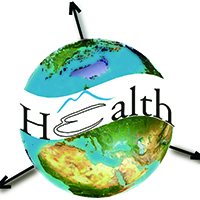Geospatial context of social and environmental factors associated with health risk during temperature extremes: Review and discussion

All claims expressed in this article are solely those of the authors and do not necessarily represent those of their affiliated organizations, or those of the publisher, the editors and the reviewers. Any product that may be evaluated in this article or claim that may be made by its manufacturer is not guaranteed or endorsed by the publisher.
Authors
This study reviews forty-six publications between 2008 and 2017 dealing with socio-environmental impacts on adverse health effects of temperature extremes, in a geospatial context. The review showed that most studies focus on extremely hot weather but lack analysis of how spatial heterogeneity across a region can influence cold mortality/morbidity. There are limitations regarding the use of temperature datasets for spatial analyses. Only a few studies have applied air temperature datasets with high spatial resolution to health studies, but none of these studies have used anthropogenic heat as a factor for analysis of health risk. In addition, the elderly is generally recognized as a vulnerable group in most studies, but the interaction between old age and temperature risk varies by location. Other socio-demographic factors such as low income, low education and accessibility to community shelters may also need to be considered in the future. There are only a few studies which investigate the interaction between temperature and air pollution in a geospatial context, despite the fact that this is a known interaction that can influence health risk under extreme weather. In conclusions, although investigation of temperature effects on health risk is already at the mature stage, studies of socio-environmental influences on human health under extreme weather in a geospatial context is still being investigated. A comprehensive assessment is required to analyse how the spatial aspects of the geophysical and social environments can influence human health under extreme weather, in order to develop a better community plan and health protocols for disaster preparedness.
How to Cite
PAGEPress has chosen to apply the Creative Commons Attribution NonCommercial 4.0 International License (CC BY-NC 4.0) to all manuscripts to be published.













